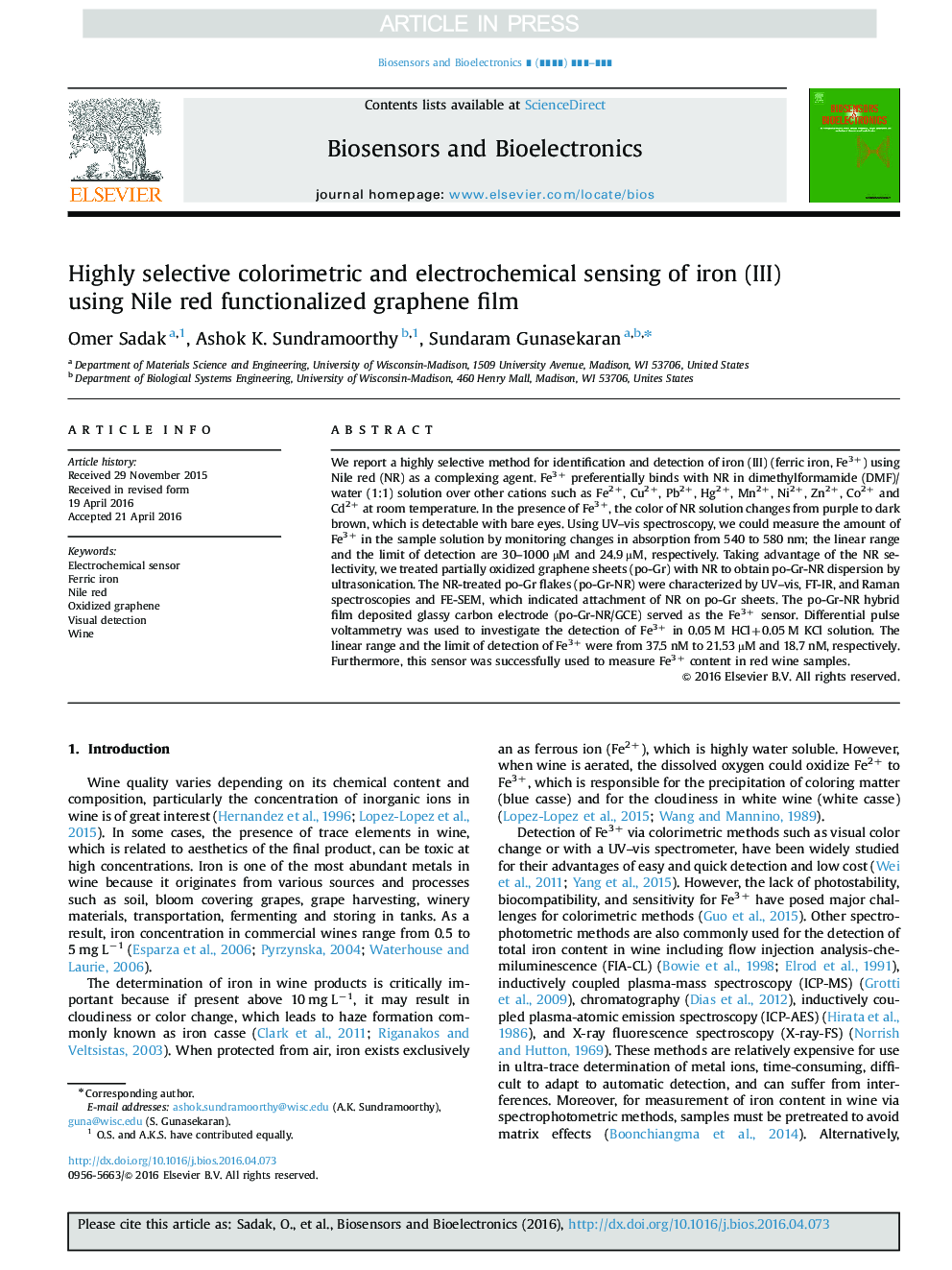| Article ID | Journal | Published Year | Pages | File Type |
|---|---|---|---|---|
| 5031704 | Biosensors and Bioelectronics | 2017 | 7 Pages |
Abstract
We report a highly selective method for identification and detection of iron (III) (ferric iron, Fe3+) using Nile red (NR) as a complexing agent. Fe3+ preferentially binds with NR in dimethylformamide (DMF)/water (1:1) solution over other cations such as Fe2+, Cu2+, Pb2+, Hg2+, Mn2+, Ni2+, Zn2+, Co2+ and Cd2+ at room temperature. In the presence of Fe3+, the color of NR solution changes from purple to dark brown, which is detectable with bare eyes. Using UV-vis spectroscopy, we could measure the amount of Fe3+ in the sample solution by monitoring changes in absorption from 540 to 580 nm; the linear range and the limit of detection are 30-1000 µM and 24.9 µM, respectively. Taking advantage of the NR selectivity, we treated partially oxidized graphene sheets (po-Gr) with NR to obtain po-Gr-NR dispersion by ultrasonication. The NR-treated po-Gr flakes (po-Gr-NR) were characterized by UV-vis, FT-IR, and Raman spectroscopies and FE-SEM, which indicated attachment of NR on po-Gr sheets. The po-Gr-NR hybrid film deposited glassy carbon electrode (po-Gr-NR/GCE) served as the Fe3+ sensor. Differential pulse voltammetry was used to investigate the detection of Fe3+ in 0.05 M HCl+0.05 M KCl solution. The linear range and the limit of detection of Fe3+ were from 37.5 nM to 21.53 µM and 18.7 nM, respectively. Furthermore, this sensor was successfully used to measure Fe3+ content in red wine samples.
Related Topics
Physical Sciences and Engineering
Chemistry
Analytical Chemistry
Authors
Omer Sadak, Ashok K. Sundramoorthy, Sundaram Gunasekaran,
